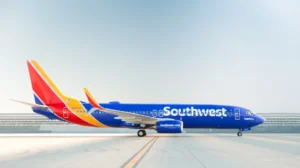Remembering Lawrence Hargrave: 130 Years of Flight Legacy
Australian aviation pioneer Lawrence Hargrave’s groundbreaking kite flight in 1894 laid the groundwork for modern aircraft design, influencing the Wright Brothers and revolutionizing flight.

Photo Source: The Times
Lawrence Hargrave, the innovative mind behind early aeronautical advancements, is celebrated 130 years after his pioneering flight that demonstrated the viability of heavier-than-air flight. On November 12, 1894, Hargrave, then 44, conducted a historic test at Stanwell Park Beach, near Wollongong, using a four-box kite contraption that lifted him 16 feet into the air. This breakthrough validated that human flight was achievable, influencing aviation pioneers worldwide, including the Wright Brothers.
Unlike many contemporaries, Hargrave chose to share his designs openly, declaring them available to any experimenter. His “cellular” kite design and rotary engine innovations laid the foundation for future aeronautical engineering, with his rotary engine concept influencing World War I aircraft engines. Although he never achieved powered flight himself, Hargrave’s discovery that curved wing surfaces improved lift was a pivotal contribution to aviation.
Engineer Richard Webb, who recreated Hargrave’s kite for the 130th anniversary, highlighted Hargrave’s far-reaching influence, noting that even the Wright Brothers adapted and patented elements of Hargrave’s work. Born in Greenwich, England, Hargrave moved to Australia as a teenager and later pursued aeronautical engineering after working at the Sydney Observatory. His legacy of innovation and selflessness is remembered through numerous published papers and museum donations.











